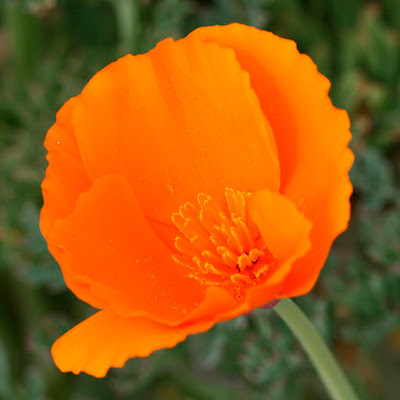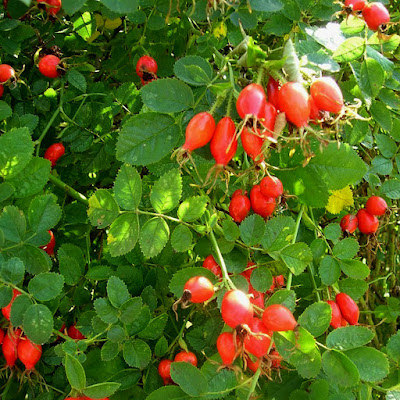The Frontier Pharmacy: While citizens of 18th century urban America had access to the modern medical discoveries of Europe and the Americas, those living on the edge of the frontier often had to rely on the medicinal plants found in the forests and on the plains. Here is a list of natural remedies and how they might have been used. *
Caution: The following descriptions are to provide historical perspectives on frontier life. No claims are made for the efficacy or safety of any of these historical medicinal applications.
California Poppy
- Members of the Costanoan tribe prepared the flowers as a strong tea to rinse their hair, to kill head lice.
- The Ohlone people crushed the seeds and mixed them with bear fat as a hair tonic dressing.
- Tribes in the Mendocino area juiced the roots to treat many different ailments, from headaches to stomachaches to toothaches, and nursing mothers would wash their breasts with the root juice to help dry the flow of milk when it was time to wean their babies.
- Pomo women made a poultice or a strong tea from the mashed seedpods and applied it to their breasts for the same purpose.
Gooseberry And Currants
- The Comanche people used a berry tea as a gargle to soothe inflamed throats.
- The Prairie Potawatomi tribe made a decoction from the root, which was a good eyewash to remove foreign particles or soothe tired or infected eyes.
- The Muscogee (Creek) tribe drank a strong tea made from the root bark to expel intestinal worms, Gooseberry juice was also applied to the skin as a wash to soothe irritated and inflamed skin tissue.
Milkweed
- The Miwok people used the latex to remove warts.
- The Cheyenne made a decoction of the dried plant tops and used it as an eyewash to heal snow blindness.
- Cherokee, Delaware, and Mohegan peoples used pleurisy root, also called butterfly milkweed (Asclepias tuberosa), made into a cough remedy.
The milkweed plant provides all the nourishment needed to transform the Monarch caterpillar into the adult butterfly.
Nettles
- The Hesquiaht and the Miwok peoples used the plant to relieve muscle and joint pain — sometimes by whipping stems of fresh nettles over the affected body areas. The formic acid contacting the skin caused a temporary burning and blistering, but it also created a rush of circulation to those parts. This improved circulation in the muscles and joints and gave some lasting pain relief for conditions like arthritis.
- Cherokee people prepared a tea from nettles and drank it as a stomach tonic.
- The Cree Indians considered nettles an important women’s herb during childbirth.
Persimmon
- The Cherokee people picked the fruits just before first frost and made them into an astringent medicinal syrup to treat diarrhea.
- The Choctaw sun-dried the fruit and baked it into a bread for the same purpose.
- People of the Catawba tribe made a poultice of the fruit to remove warts and a decoction from the tree’s bark to use as a mouthwash for thrush (a type of fungal infection).
- The Rappahannock Indians chewed the bark to relieve heartburn.
Spruce
- In the 1500s colonists in Quebec City began to suffer from scurvy (caused from a vitamin C deficiency).
- The Iroquois Indians shared this important remedy with them. Drinking spruce tea and spruce beer, called Newfoundland spruce beer, not only healed them of scurvy, it became an important preventive step.
Willow
- The Choctaw and the Delaware Indians, along with many other tribes, used peachleaf willow (S. amygdaloides) and other species to fashion a toothbrush of sorts from a small willow twig. It would clean their teeth, and the astringency of the tannins helped to keep gums healthy.
Yew
- Traditionally, women of the Okanagan tribe and other northwestern coastal tribes ate yew berries as a form of contraception.
- The Quinault people prepared the bark as a decoction and drank it in very small doses to relieve arthritis, tuberculosis, and kidney disease.
- The Cowlitz Indians made a poultice of the needles and applied it topically to wounds. The leaves are not taken internally, however, as they are poisonous.
Another source describes the use of Rose Hips.
Rose Hips
While we have access to safe and effective medications, a modern day, historically accurate Trekker would be smart to keep a stash of medicinal plants when traveling deep into the woods.
Caution: These descriptions are only intended to document historical purposes. No claims are made for the efficacy or safety of any of these historical medicinal applications.
** Murphy, Hugh. "Foods Indigenous to the Western Hemisphere - Rose Hips". American Indian Diet and Health Project. Click here to read the post in its entirety.
Code: front01









